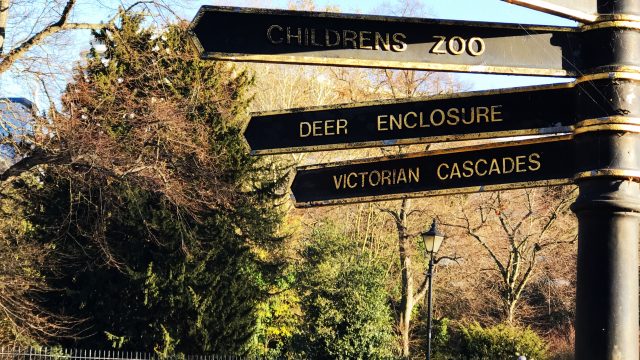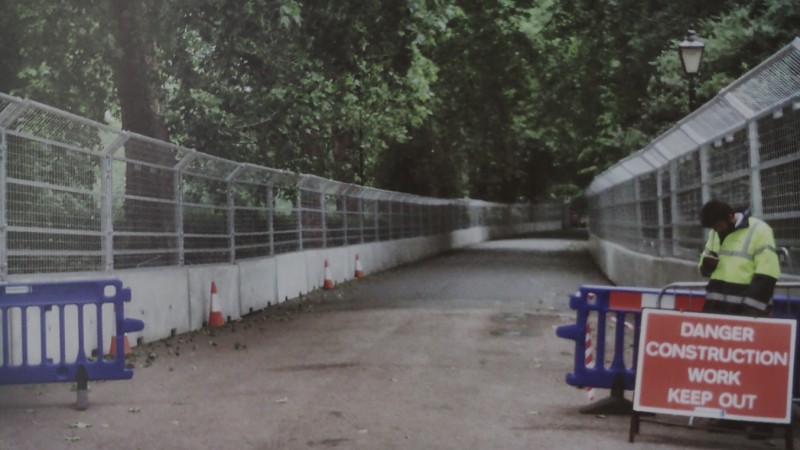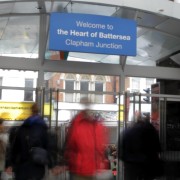I was at my petty worst when I received a copy of Battersea MP Jane Ellison’s reporting back leaflet talking about her Shine a Light campaign and featuring a photo of her by the newly installed light in Dorothy Gardens. Falling into that very 21st century frailty of passive aggressively tweeting in haste and repenting, or ruminating, at leisure.
Of course, the bigger part of me knows that I should consider my fondness for the (attributed) Truman quote: “It’s amazing what you can achieve when you don’t care who takes credit.” The petty part wasn’t listening.
Ten years of struggle
I struggled with this one. I’d been trying, on and off, to get a light installed there for over ten years. The most recent attempt, which was ultimately successful, was prompted by yet another resident contacting me about it. Together, and later joined by another nearby resident, we spent dark winter evenings collecting petition signatures from local residents and people using the passageway.
The call for a light was rejected by Cllr Jonathan Cook when it went to his council committee, despite the report not being entirely accurate. But another opportunity was on the horizon and I submitted a bid to the Wandsworth Local Fund to get a light installed. This gained the support of Tony Belton, Simon Hogg (Labour councillors from the neighbouring Latchmere ward) and, somewhat ironically, Jonathan Cook and was successful in getting funding. Hence the light that is there today.
It was surprisingly easy in the end. Almost disappointingly so. After ten years it almost felt like the end should have been harder than filling out a relatively short form. But equally, it took ten years (that I spent most of them on the council’s Leader’s Group speaks either to my staggering incompetence or just how very hard it is to get the council to say ‘yes’ to something) and it was a project to which I had become attached.
All the other lights
Why Jane Ellison chose to feature the site so prominently on her leaflet did puzzle me though. My first instinct was, uncharitably, that perhaps there were no lights that had been installed as a consequence of her Shine a Light campaign. I then wondered if it was just a useful proxy, a photogenic and recognisable location that would represent the issue, since other places might be less than pleasant alleys and tunnels.
So I contacted Jane Ellison asking for details of her other successes. Below I present a complete list of all the lights installed as a result of her campaign.
Full list of lights installed:
— End of list —
To be fair, she just didn’t bother responding. And frankly, why should she? She’s an MP and minister and has better things to do than respond to the tantrums of a slightly petulant independent councillor, however politely written those tantrums may be.
Justifying my petulance
Of course, I know my attitude is deeply unappealing. It’s exactly the sort of behaviour I know I wouldn’t want my children to see and certainly not to exhibit. (Although I suppose I do like them taking pride in their own work and wouldn’t want them seeking credit for the work of others.) In this case, though, I’ll live with my hypocrisy.
I was upset that Jane was pushing a leaflet through doors effectively taking credit for the light I felt I had been responsible for delivering: it may not be much, but it’s one of the few things I feel I have to my name. While I’ve had more than enough exposure to politics and politicians to have realistically low expectations of them, that still doesn’t stop me feeling aggrieved.
Perhaps worst of all, though, is the sense of disappointment I felt. Elsewhere in the leaflet, as she always does, Jane listed the important meetings and events she had attended. And she is, as I’ve noted, the local MP and a government minister. She has clout—a lot of clout—with the council, with public services and private companies in the constituency. That she is using her leaflet to take credit for something a non-entity councillor took ten years to deliver was a disappointment. Instead it should be full of what she’s done to make Battersea better.






